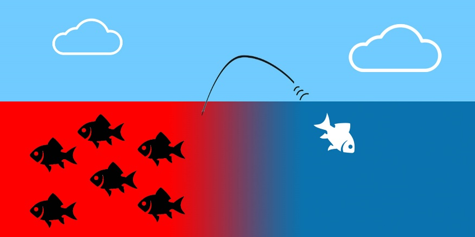Blue Ocean Strategy: Guide to Enter Competitive Markets
Introduction
Ever wondered how
Aman Gupta’s Boat was able to crack the code of electronics industry?
Red Ocean
Strategy
Red itself symbolizes cut-throat competition.
Here, existing industry practices are pursued to defeat the competition. In the red oceans, industry boundaries are well-defined
and accepted, and the competitive rules of the game are known to all. Red ocean strategy is when companies try to
outperform their rivals to grab a greater share of existing demand implying
profit for one is loss for the other. As the market space gets crowded, prospects for profits and
growth are reduced. Products become commodities which means the differentiation
remains almost nil, and cutthroat competition turns the red ocean bloody, hence
the name.
Blue Ocean
Strategy
When we talk about blue
oceans, we refer to the unattended areas in the given industry by the
competitors and capitalize on it to position the brand as distinctive and
customer oriented. Blue ocean strategy is the simultaneous
pursuit of differentiation and lower costs to create new market space and generate
new demand which Boat was able to pull off effectively. It is about creating
and capturing uncontested market space thereby reducing the competition to dust.
It is based on the view that market boundaries and industry set parameters are
not a given and can be reconstructed by the new entrants to leverage their
brands.
Take
the example of PaperBoat. The beverage industry was dominated by Coca Cola and
Pepsi and to compete against these giants would imply that stakes are certainly
going to be quite high!
What
worked for the founders is that they saw nobody in the market was catering to
the traditional beverages consumed by Indians in different parts of the world
like Kanji, Aamras, AamPanna and many more. This area was being ignored by all
the players and that’s how they were able to create a BLUE OCEAN for
themselves! And oh, not to forget the nostalgic tint to the communication
strategy that they added which was enough to melt the hearts of the children,
their parents and grandparents alike.
References





Comments
Post a Comment